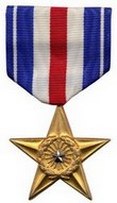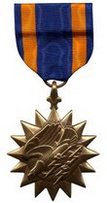Bobby Byrne
Ballplayers Wounded in Combat
| Date and Place of Birth: | January 24, 1917 St. Louis, MO |
| Date and Place of Death: | April 10, 1993 Philadelphia, PA |
| Baseball Experience: | Minor League |
| Position: | Third Base/Outfield/Second Base |
| Rank: | Major |
| Military Unit: | 64th Fighter Squadron, 57th Fighter Group USAAF |
| Area Served: | Mediterranean Theater of Operations |
Bobby and Bernie Byrne were the sons of former major league
third baseman, Bobby Byrne. Both brothers played in the minor leagues
before the war. Both joined the Army Air Force and flew fighter combat
missions. Both shot down enemy planes.
Robert J. “Bobby” Byrne, was born on January 24, 1917, in St. Louis,
Missouri. The son of former major league third baseman, Bobby Byrne
(1907 to 1917 Cardinals, Pirates, Phillies and White Sox), he
attended Our Lady of Lourdes grade school and went from there to
Beaumont High School, where he played baseball and football.
Byrne, 22, signed his first professional contract with Knoxville of the
Southern Association in 1939, and was assigned to the Mount Airy
Graniteers of the Class D Bi-State League, the Waterloo Red Hawks of the
Class B Three-I League and the Ashland Colonels of the Class D Mountain
State League that year. In 117 games for the season, the right-handed
hitting third baseman/outfielder batted .265.
In 1940 - the year his younger brother, Bernie, broke into professional
baseball with the Appleton Papermakers - Bobby again played for three teams, splitting the season between
the Ashland Colonels of the Class D Mountain State League, the
Salem-Roanoke Friends of the Class D Virginia League and the Fulton
Tigers of the Class D Kitty League. Byrne batted over .300 with Ashland
and Salem-Roanoke.
In 1941, Byrne was back with Ashland and batted .230 in 61 games as a
second baseman, before entering military service at Jefferson Barracks,
Missouri, in August. Byrne served as an aviation cadet with the Army Air
Corps and took primary flight training and then advanced to Gardner Army
Airfield at Taft, California. He received his pilot’s wings at Luke
Field, Arizona, on March 6, 1942, and was an instructor at Tallahassee,
Florida, before going overseas in September 1942.
“I always figured Bobby would be a flier,” his father told The Sporting
News on November 19, 1942. “When he was a boy he was always interested
in planes. Later on, he put together miniature planes – the kind you
bought in five and ten cent stores, and then assembled. I think he won a
prize or two for building the best toy bombers. When the war came, it
was only natural for Bobby to turn toward aviation.”
Second Lieutenant Byrne arrived in Egypt, North Africa, with the 64th
"Black Scorpions" Fighter Squadron of the 57th Fighter Group in
September 1942. “I’ll get a Jerry for each one of you at home,” he wrote
in a letter received by his father on October 10, 1942.
On his first sortie flying a Curtis P-40 Warhawk, protecting a
fighter-bomber attack on enemy landing grounds at El Daba in Egypt,
Byrne shot down a German Messerschmitt Bf109 fighter. Byrne later
described to the Associated Press how he maneuvered against one German
fighter for a burst from his guns, pulled away and saw three more below
him, which he plunged into with guns blazing. He saw one burst into
flames.
“It thrilled me to tears,” his mother told The Sporting News, “when the
newspapers called me early in the morning to tell me what Bobby had done
in his first combat in Egypt. Of course, I’ve steeled myself to expect
good news with the bad, but after all I’m a mother and when you’ve got
your only two boys in the aviation service, it puts you a little on
edge.”
On January 12, 1943, Byrne was wounded during aerial combat. Shortly
afterwards he received the Distinguished Flying Cross and Air Medal to
accompany the Purple Heart.
On April 18, 1943, stationed at El Djem, Tunisia, Byrne shot down a
further three enemy airplanes on a day that became known at "The Palm
Sunday Massacre." Through the April skies over Cape Bon droned a hundred
Junkers JU-52 enemy transports escorted by upwards of fifty fighters,
all flying in perfect formation. Forty-six Warhawks with RAF Spitfires
flying top cover swept in with blazing guns and the air became a
whirling, screaming mass of diving planes and gunfire. Junkers
transports blew up in mid-air. Messerschmitt fighters were shot out of
the sky. “The Messerschmitts were all messed up,” said Byrne. “I got
three of them. All you could see were those big ships [JU-52s] coming
apart in the air, plunging into the sea and crashing in flames on the
beach.”
Byrne added another two on April 26, to bring his tally to six and make
him one of the leading aces in the Army Air Force at the time.
"During his three seasons in Organized Baseball, young Bobby Byrne attracted little attention, for he was only an outfielder in the lower minors. Today, there is no man to whom baseball points with greater pride," proudly declared The Sporting News on April 29, 1943.
Promoted to the rank of captain, he returned home to the United States during the summer of 1943. On September 11, he married Miss Bonnie Dean at Kellogg Field, Michigan, and then took up an assignment as an instructor at an army air field in New York. He was later stationed in North Carolina, and worked as a test pilot rising to the rank of major.
His brother, Bernie, flew with the 33rd Fighter Group in North Africa,
Italy, Sicily, India and China. He shot down a German fighter on
September 15, 1944.
Bobby Byrne moved to the Philadelphia area after his discharge from the
Army Air Force, and worked as a representative for the Empire Brush Company until he
retired, with time out to serve his country again during the Korean War. He passed away on April 10, 1993, at a nursing home near his
home in suburban Philadelphia after a short illness. He was 76 years old
and is buried at Philadelphia Memorial Park.
Date Added December 21, 2017. Updated January 28, 2018
Can you add more information to this biography and help make it the best online resource for this player? Contact us by email
Read Baseball's Greatest Sacrifice Through The Years - an online year-by-year account of military related deaths of ballplayers
Baseball's Greatest Sacrifice is associated with Baseball Almanac
Baseball's Greatest Sacrifice is proud to be sponsored by




